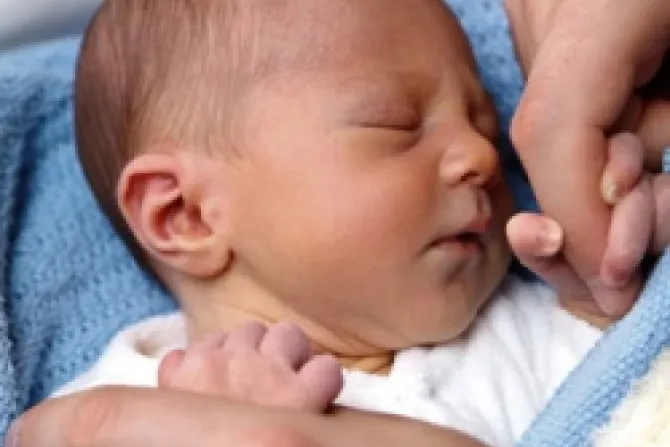Rome, Italy, Mar 3, 2014 / 16:54 pm
A doctor in Italy has seen great success in helping couples conceive by examining their overall health and treating underlying causes of infertility, without artificial reproduction technologies.
Dr. Felice Petraglia, Professor and Chair of Obstetrics and Gynecology at the University of Siena in Italy, runs a clinic specializing in reproductive medicine. However, his clinic does not offer in-vitro fertilization, artificial insemination, or other "assisted reproduction technologies."
Instead, Petraglia and his team aim to be "classic physicians" by beginning fertility treatments with a basic diagnosis to discover the underlying causes of infertility.
The doctor says that treating these fundamental causes of infertility actually has better results than in-vitro fertilization or other artificial reproductive methods.
Petraglia explained to CNA in a Feb. 21 interview that most doctors in reproductive medicine, upon seeing an infertile couple, "say immediately, 'go to the assisted reproduction.'"
"That is a mistake," he stressed.
"There are now data that say if you have a baby by artificial techniques, pregnant women and these babies have more difficulties in growth, in gestation - more problems. So this understanding is suggesting to us, 'please go back to the original way of conception,'" the Ob-Gyn explained.
In order to treat infertile couples, Petraglia begins with a complete diagnosis of general health, only then moving on to possible reproductive problems. A thorough analysis of "hormones and physiology and anatomy" can allow the doctor to discover underlying issues such as infection, chronic disease, or "anatomical disturbance" like uterine fibroids or endometriosis.
Once a diagnosis is made, the problem is treated through various methods, which may include hormones, medicine, or surgery.
The results have been very strong, notes Petraglia. "We have a percentage of pregnancy in infertile women with endometriosis, going from, let's say, 20 percent of fertility up to 90 percent in a few weeks, because of the surgery, because of the drugs, because you have an open window for fertility."
In fact, Petraglia says that treating the underlying causes of infertility leads to a greater chance of pregnancy than that offered by assisted reproductive technologies.
"A couple with infertility, which has, let's say, a 10 percent possibility to become pregnant, goes to the assisted reproduction technologies, and when you have a counseling (session) they say to you, the best you can have is 40 percent, 30 percent…so you know that it's still very low."
"When a couple comes to us with a disturbance in fertility, only 10 percent possibility (of pregnancy), but we have a good analysis, a good exploration, a good treatment also, then we go from 10 to 90 percent."
The professor of Obstetrics and Gynecology notes that although "sometimes the disease (or condition) can come back," at least for "one or two years we can assure that they have a very high percentage of fertility."
"The immediate result of the treatment is much better than assisted reproduction."
Petraglia's advice to couples suffering from infertility?
"Not to be in a hurry!" Couples often want "to have a baby the next day, the next week!" he observes, which leads to the choice of assisted reproduction because they think "it's easy… no diagnosis, no surgery, it's much simpler."
But this "is not true because of the low results, and also because of the adverse effects later," he points out.
Above all, he says, couples "have to be patient" and allow "one year for investigations and analysis and possible natural conception."
With all the available options, Petraglia observes, "the treatments for infertility today are quite advanced."


